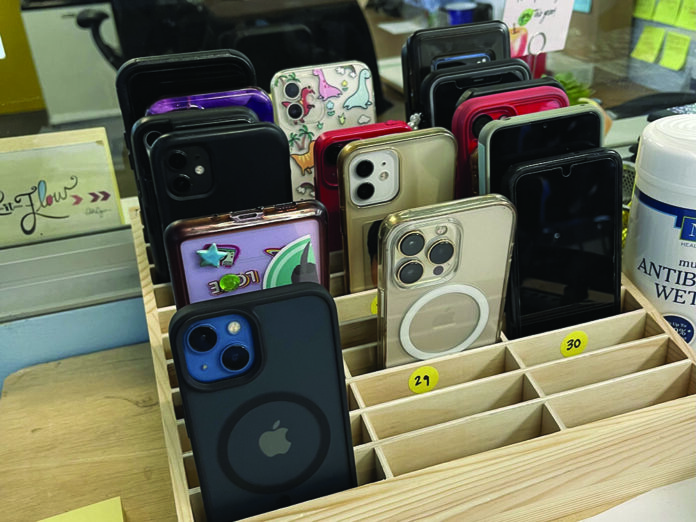by Mark Richardson
Separating high school students from their cellphones might be seen as a daunting task but one California school said having students stash them during the school day has brought some surprising results.
Administrators at High Tech High in San Diego said fostering a phone-free school environment led to positive change. Starting this school year, High Tech High required students to relinquish their phones at the beginning of the day.
Colleen Glass, compliance officer for the school, said tracking student perceptions and observing the impact of cellphones on the learning culture provides a compelling case study.
“Where before, they were sitting in those spaces and kind of ‘heads down’ into their technology, they’re now sitting in those spaces and having conversations,” Glass explained. “There’s a lot more engagement and conversation in class, because students are talking to each other and they’re not listening to their AirPods.”
Across the country, more than three-quarters of K-12 public schools prohibit nonacademic cellphone use, according to a report from the 2021-2022 school year. But only 43 percent of public high schools have such a rule and it is often not enforced.
Doug Keller, partnerships lead for the nonprofit Youth Truth, said it has been tracking students’ experiences over the past decade in such areas as engagement, relationships, culture, academic challenges and their overall sense of belonging. He noted once the phones were gone from classes, the majority of students showed improvement in several areas.
“When they implemented the policy, we saw a sharp jump upward,” Keller reported. “We saw growth, students feeling a stronger sense of belonging at their school because of this new policy, after seeing a decline that matched the decline that we have anecdotally seen elsewhere.”
Keller added Youth Truth surveyed students to measure the “intersection of student voice, school improvement and key indicators of the student experience.” It also includes areas like peer collaboration and relationships with their teachers. He emphasized they will continue the study in future years.



